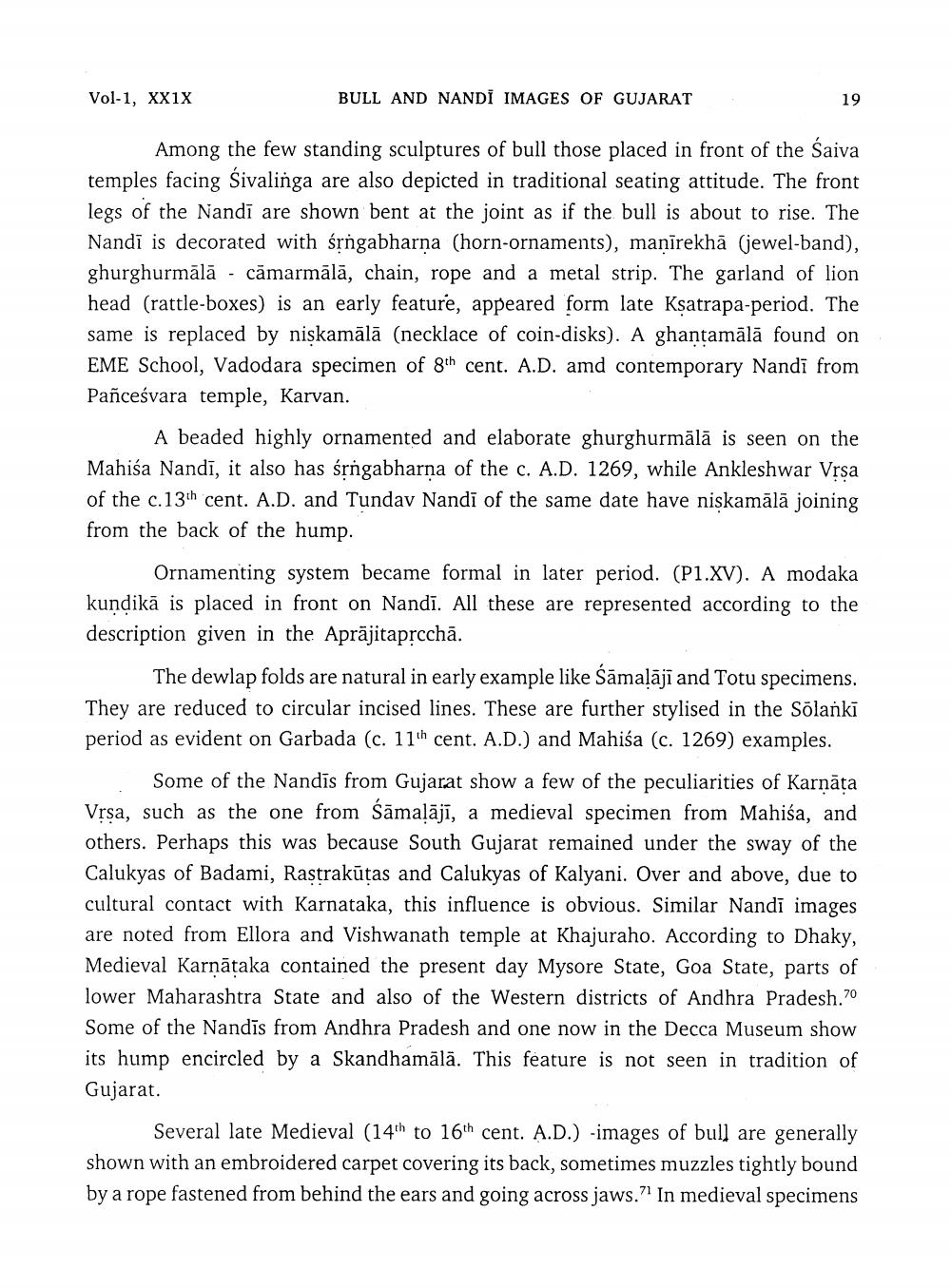________________
Vol-1, XX1X
BULL AND NANDI IMAGES OF GUJARAT
19
Among the few standing sculptures of bull those placed in front of the Saiva
facing Sivalinga are also depicted in traditional seating attitude. The front legs of the Nandi are shown bent at the joint as if the bull is about to rise. The Nandi is decorated with śrngabharna (horn-ornaments), manīrekhā (jewel-band), ghurghurmālā - cămarmālā, chain, rope and a metal strip. The garland of lion head (rattle-boxes) is an early feature, appeared form late Kșatrapa-period. The same is replaced by niskamālā (necklace of coin-disks). A ghantamālā found on EME School, Vadodara specimen of gth cent. A.D. amd contemporary Nandi from Pañceśvara temple, Karvan.
A beaded highly ornamented and elaborate ghurghurmālā is seen on the Mahisa Nandī, it also has śrngabharna of the c. A.D. 1269, while Ankleshwar Vrsa of the c.13th cent. A.D. and Tundav Nandi of the same date have niskamālā joining from the back of the hump.
Ornamenting system became formal in later period. (P1.XV). A modaka kundikā is placed in front on Nandi. All these are represented according to the description given in the Aprājitaprcchā.
The dewlap folds are natural in early example like Sāmalāji and Totu specimens. They are reduced to circular incised lines. These are further stylised in the Solanki period as evident on Garbada (c. 11th cent. A.D.) and Mahisa (c. 1269) examples.
Some of the Nandis from Gujarat show a few of the peculiarities of Karnāta Vrsa, such as the one from Sāmalājī, a medieval specimen from Mahisa, and others. Perhaps this was because South Gujarat remained under the sway of the Calukyas of Badami, Rastrakūtas and Calukyas of Kalyani. Over and above, due to cultural contact with Karnataka, this influence is obvious. Similar Nandi images are noted from Ellora and Vishwanath temple at Khajuraho. According to Dhaky, Medieval Karnāțaka contained the present day Mysore State, Goa State, parts of lower Maharashtra State and also of the Western districts of Andhra Pradesh.ro Some of the Nandīs from Andhra Pradesh and one now in the Decca Museum show its hump encircled by a Skandhamālā. This feature is not seen in tradition of Gujarat.
Several late Medieval (14th to 16th cent. A.D.) -images of bull are generally shown with an embroidered carpet covering its back, sometimes muzzles tightly bound by a rope fastened from behind the ears and going across jaws.71 In medieval specimens




